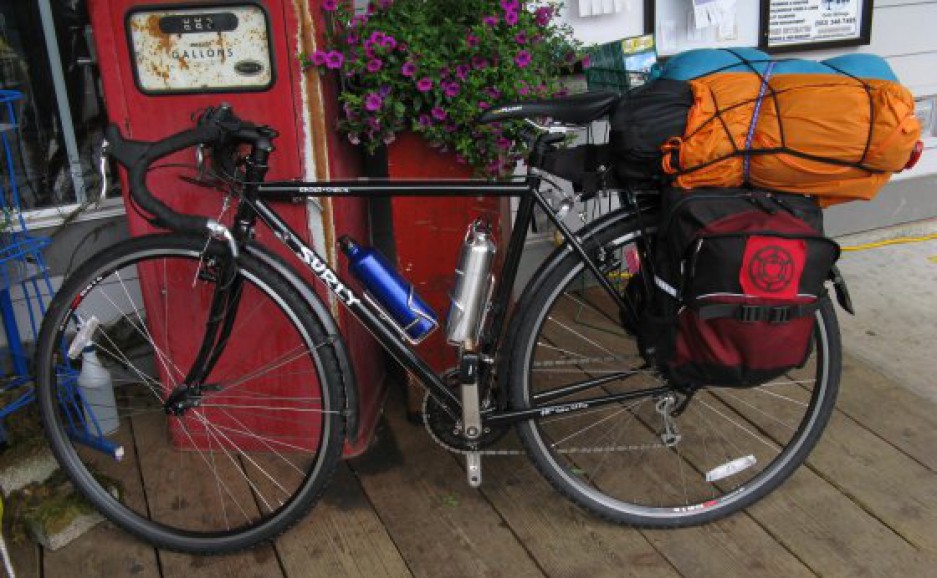The beginning of a trip is always a great opportunity to exercise awareness while staying present in the moment. As I pack and check over my bike and gear, I keep the safety items mandatory, but leave myself open to new ideas about what to take for my campsite and what I may want to wear during my journey this time around. Some variations might be decisions about whether to pack a hammock: the extra two pounds can actually be worth the lovely nap I have the next day.I pack my two or three bottles of water, loads of versatile non-perishables, and the appropriate gear for the weather that day. In my experience, riding fully loaded — with front and rear panniers attached to the frame — transformed my trip planning over the years and now seems a world apart from how I used to plan for car camping.
On a bike, I’m prepared to make more frequent stops and restock my supplies before I reach the campground. It’s critical to know where accessible water fountains are located on the route. If I’m riding a route for the first time, I’ve found it helpful to note where large box stores and parks or other public facilities can be found nearby through online map searches.
The fact is, full water bottles and other carried liquids could easily be the heaviest single item on the bike. Riding with a gallon (or more!) of water will tire a rider quickly and may outweigh the benefits of a large haul of fluids. For me, this means that it’s better to plan for frequent stops on most of my trips. Staying adequately hydrated will drive the itinerary: ahimsa, or non-harming intent, mandates not harming oneself or others.
As I pack each pannier, I can’t help but think of the weather conditions: specifically, wind conditions. Panniers are capable of adding a tremendous amount of wind resistance for the rider to overcome. However, with each successful trip I’ve started to learn how to enjoy the challenge of riding against the a headwind, with even more drag from my packs. Embracing that experience and learning to be open to difficulty is a component of satya: truth.
After all, it only means that the more calories you expend while enjoying the path to your camp, the more goodies you can relax with once you’ve set up camp!
If you’re still trying out the idea I’m pitching here, and aren’t quite sure what “bike touring” is, or why some people choose that term instead of “bike camping”, maybe I can explain how I’ll use those terms on this blog. For most of my trips, I tend to stay within a small radius of the Portland Metro Region (within 50 miles, as a matter of routine), rather than setting out on a tour, which implies a longer distance out to me. Also, the primary purpose of my bike travel is ultimately to set up camp: therefore, “bike camping”. For those (too few) occasions when I’ve ridden through multiple states in the Pacific Northwest, I use the term “touring”. But that’s just me in my terminology.
Further Resources: There are a ton of well-vetted and informative sites out there which provide a lot of information about routes, gear, and groups. If you’re intrigued by the idea, I also recommend Sheldon’s pages on trip planning for bikes:
- A basic description of “Touring”
- Planning Your Own European Bicycle Tour,
- Planning Your Own European Bicycle Tour, Part Two, and
- Planning Your Own European Bicycle Tour, Part Three.
It’s important to point out that Sheldon’s site and his writings are meant to equip as many as possible with information to allow access to this remarkable mode of travel. Bike camping and touring does NOT have to be reserved for those with more financial and material resources.
